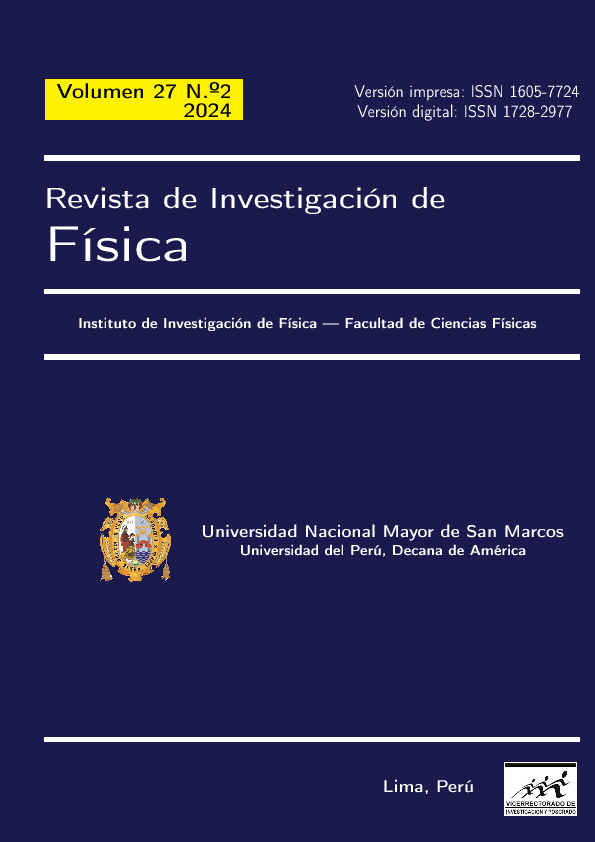The symmetry S3 in the dark matter
DOI:
https://doi.org/10.15381/rif.v27i2.28264Keywords:
Four Higgses doublet model, flavor symmetry, dark matter candidateAbstract
Experimental evidence so far suggest that there are only three generations of quarks and leptons. Before electroweak symmetry breaking, the three families of quarks and leptons are indistiguishable, so they are invariant under transformations of the S_{3} group. Using the symmetry S_{3} we have at our disposal 3 irreducible representations, \mathbf{2}, \mathbf{1}_{s}, \mathbf{1}_{a}, where we can accommodate up to four Higgs doublets in a model that occupies all the irreducible representations of the group S_{3}. This model with four Higgs doublets (4HDM) is of great interest, thanks to the fact that we can take the fourth Higgs doublet as a stable particle without interaction with fermions so that it becomes a candidate for dark matter, while with remaining three Higgses the propierties obtained are maintained. An important condition for having a viable dark matter candidate is its stability, i. e., it does not decay into Standard Model particles. The simplest way to establish the stability of a particle is imposing a discrete symmetry Z_{2}, so that all the fields are transformed in the form \Psi\longrightarrow\Psi, while the dark matter candidates are transformed as \chi\longrightarrow-\chi, this way we make sure we do not have terms denoting decays of \chi. This method will be used in 4HDM. Another imposition required to propose the candidacy of a field of the doublet H_{a}, is that its corresponding Vaccum Expectation Value (VEV) is equal to zero, v_{a}=0.
Downloads
Published
Issue
Section
License
Copyright (c) 2024 Mississippi Valenzuela

This work is licensed under a Creative Commons Attribution 4.0 International License.
THE AUTHORS RETAIN THEIR RIGHTS:
a. The authors retain their trademark and patent rights, as well as any process or procedure described in the article.
b. The authors retain the right to share, copy, distribute, perform and publicly communicate the article published in the Revista de Investigación de Física (for example, place it in an institutional repository or publish it in a book), with an acknowledgment of its initial publication in the Revista de Investigación de Física.
c. The authors retain the right to make a subsequent publication of their work, to use the article or any part of it (for example: a compilation of their works, notes for conferences, thesis, or for a book), provided that they indicate the source. of publication (authors of the work, journal, volume, number and date).






